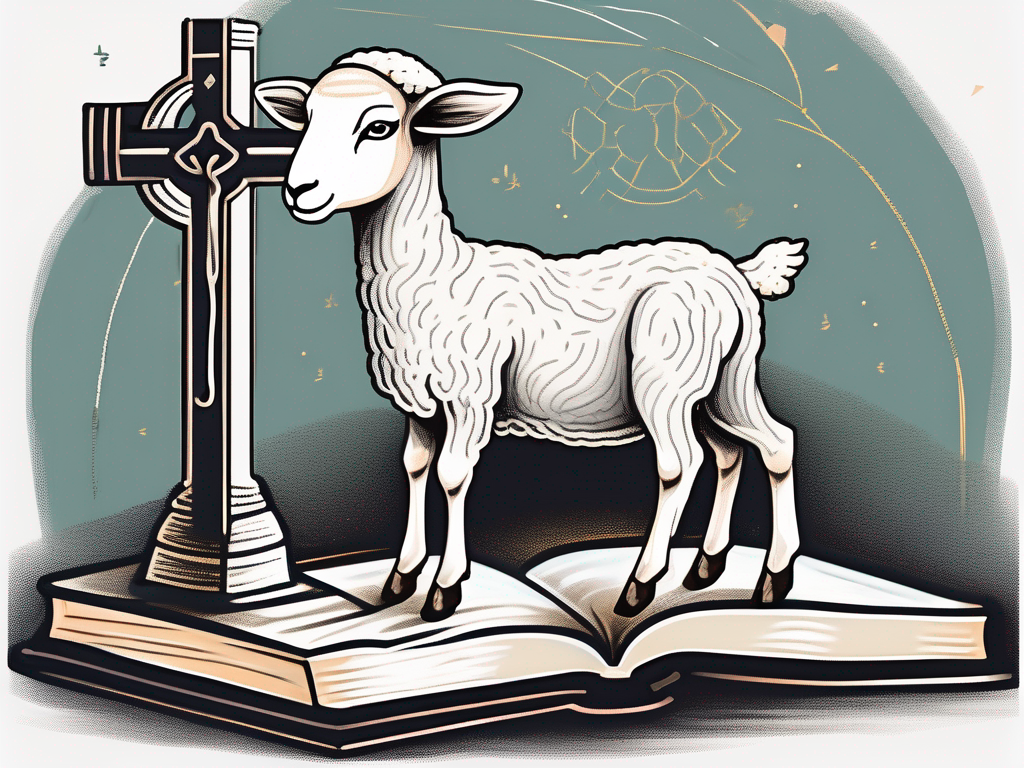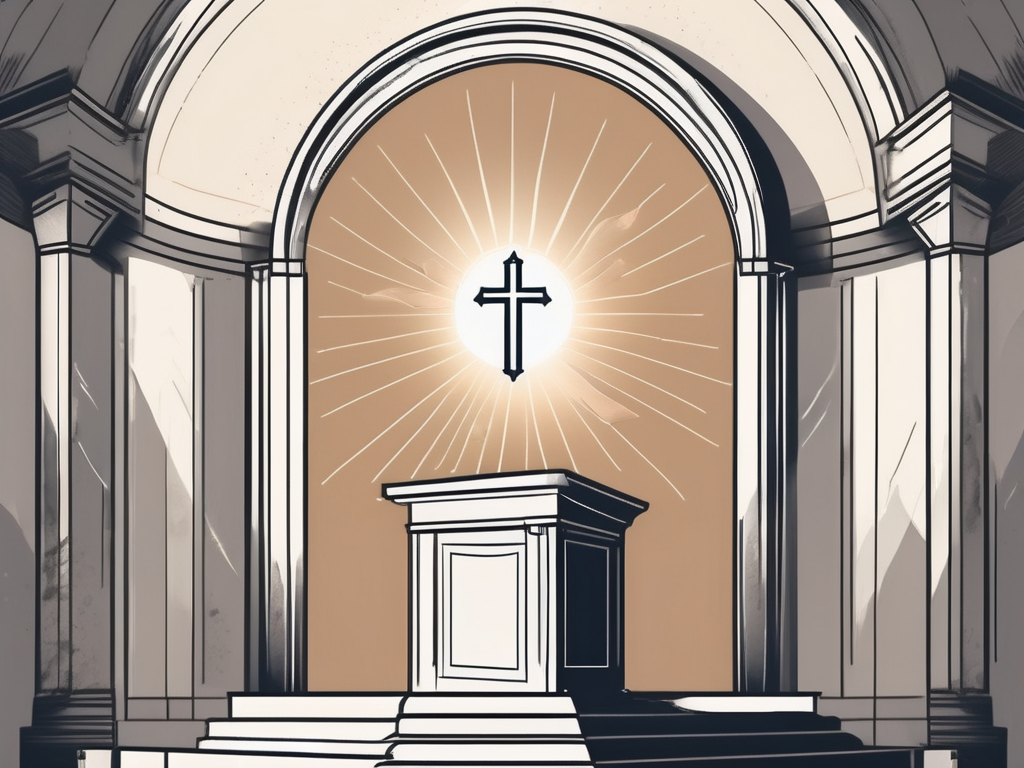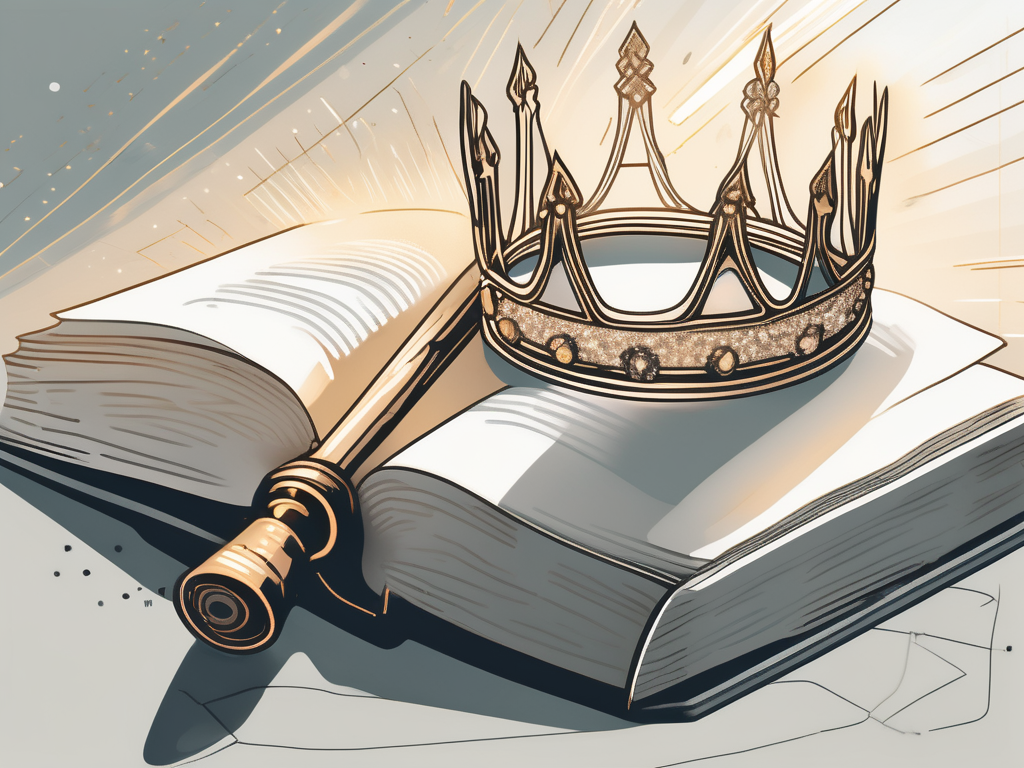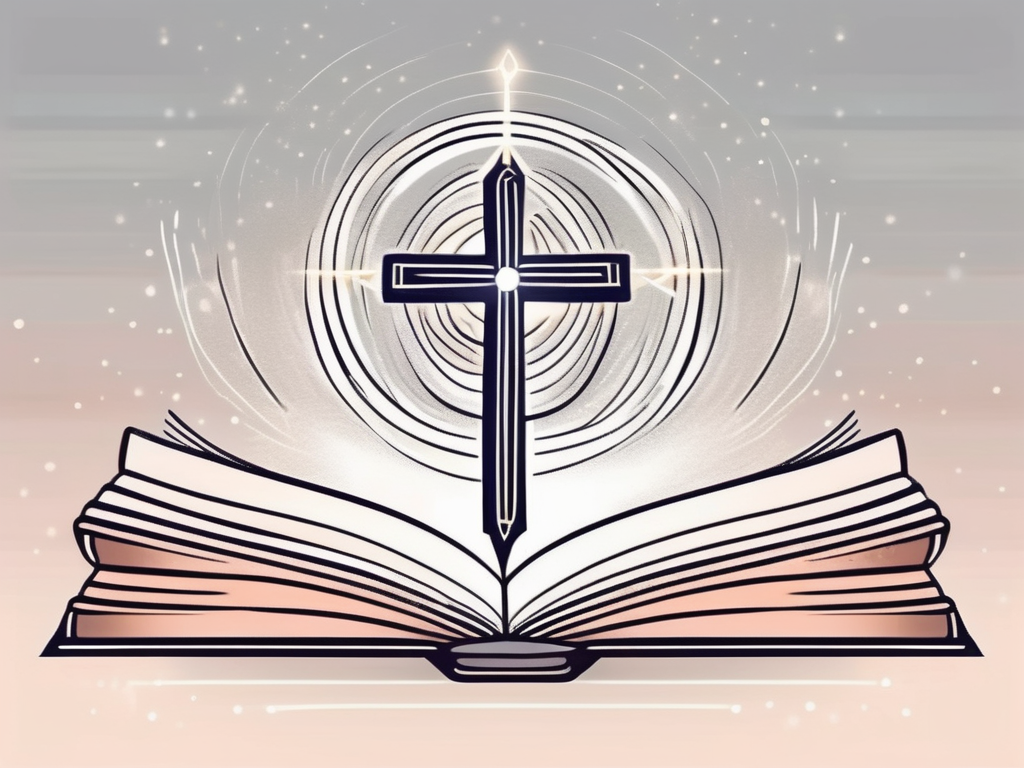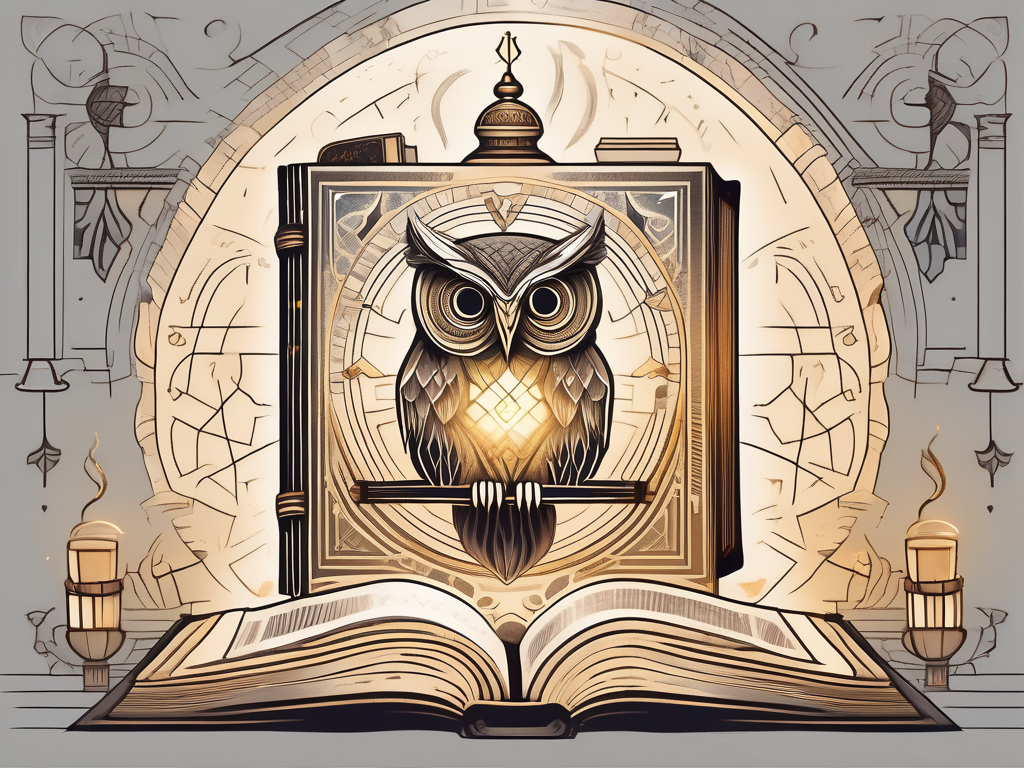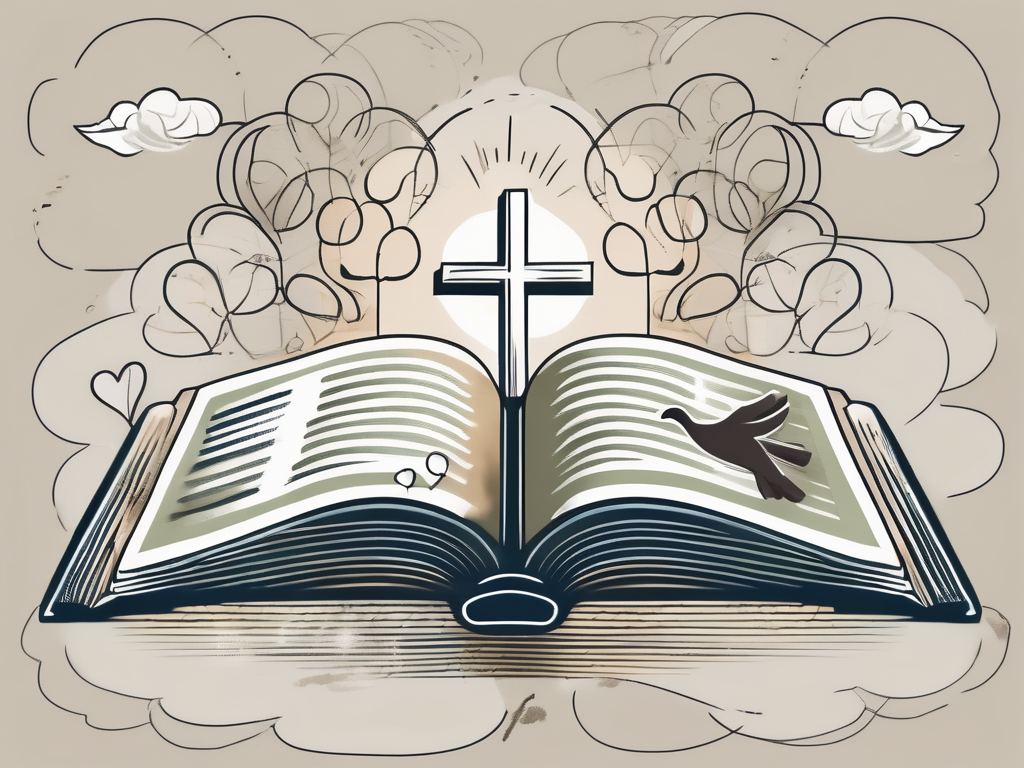In the vast tapestry of characters that make up the Bible, Rachel stands out as someone who has left an indelible mark on both ancient and modern readers. Her story is one that is filled with intricacies and layers, making it a fertile ground for exploration. In this comprehensive analysis, we will delve into various aspects of Rachel’s life, her theological interpretations, her influence on biblical women’s roles, her cultural impact, and finally, conclude with some thoughts on her enduring relevance.
Understanding the Character of Rachel in the Bible
Rachel’s story begins in Genesis, where we are introduced to her as the younger daughter of Laban. She is described as being beautiful and graceful, capturing the heart of Jacob at first sight. However, her early life and marriage were not without challenges.
Marriage in biblical times was often a complex affair, and Rachel found herself entangled in a web of deceit and rivalry. Her father tricked Jacob into marrying her elder sister, Leah, instead of Rachel. It wasn’t until later that Jacob was able to marry Rachel as well, thus sowing the seeds of discord between the two sisters.
Rachel’s struggles continued as she faced the pain of infertility, while her sister Leah gave birth to son after son. In her desperation, Rachel resorted to unconventional methods, giving her handmaid Bilhah to Jacob as a surrogate. This act resulted in the birth of two sons, Dan and Naphtali.
Despite these challenges, Rachel’s story also contains moments of triumph. Eventually, she conceived and gave birth to Joseph, who would play a crucial role in the future of the Israelites. Her significance as a mother and her devotion to her children are central themes in her narrative.
As Rachel’s story unfolds, we see her wrestling with feelings of jealousy and inadequacy. The constant comparison to her sister Leah, who seemed to effortlessly bear children, weighed heavily on Rachel’s heart. She longed for the joy of motherhood and the fulfillment that it would bring.
During this time of longing, Rachel’s faith was tested. She questioned why God had allowed her to suffer while blessing her sister with children. The pain of infertility consumed her, and she began to doubt whether her prayers would ever be answered.
But Rachel’s story is not just one of despair. It is a testament to the power of perseverance and the strength of a woman’s spirit. Despite her struggles, Rachel never gave up hope. She continued to pray fervently, seeking God’s intervention in her life.
And then, in a moment of divine intervention, Rachel’s prayers were answered. She conceived and gave birth to Joseph, a son who would bring her immense joy and become a pivotal figure in the history of the Israelites. Rachel’s faith had been rewarded, and her story serves as a reminder that God’s timing is perfect.
But Rachel’s journey did not end with the birth of Joseph. She continued to face challenges and hardships, just as we all do in life. Yet, through it all, she remained steadfast in her faith and unwavering in her love for her children.
Rachel’s character is a complex one, filled with both triumphs and tribulations. She is a reminder that even in the face of adversity, we can find strength and hope. Her story teaches us the importance of perseverance, faith, and the power of a mother’s love.
Theological Interpretations of Rachel’s Story
To fully grasp the theological implications of Rachel’s story, we need to place it within the broader context of the Old Testament. Rachel is often seen as representing the nation of Israel, while her sister Leah symbolizes the surrounding nations. This interpretation highlights the themes of chosenness, divine favor, and the struggles faced by the Israelite people.
In modern theological perspectives, Rachel’s story takes on added dimensions. Scholars explore her role as a marginalized woman within a patriarchal society, highlighting the power dynamics present in her relationships with Jacob and her father. They also delve into the themes of redemption and grace, as Rachel’s journey mirrors the larger narrative of God’s plan for humanity.
When examining Rachel’s story within the context of the Old Testament, we can see how her life and experiences parallel the struggles and triumphs of the nation of Israel. Just as Rachel was chosen by Jacob to be his wife, Israel was chosen by God to be His people. This chosenness comes with both blessings and challenges, as Rachel’s story demonstrates.
Throughout the narrative, Rachel’s sister Leah represents the surrounding nations, symbolizing the world outside of Israel. Leah’s ability to bear children easily contrasts with Rachel’s infertility, highlighting the struggles faced by the Israelite people in their quest for prosperity and fulfillment. Rachel’s longing for children and her eventual conception of Joseph and Benjamin reflect the hope and promise of the nation’s future.
Furthermore, Rachel’s story can be examined through a feminist lens, shedding light on the power dynamics present in her relationships with Jacob and her father. In a patriarchal society, Rachel’s worth is often measured by her ability to bear children, and her infertility leads to feelings of inadequacy and marginalization. This raises important questions about the treatment of women in biblical narratives and the need for a more inclusive interpretation of their roles and experiences.
When exploring Rachel’s story from a modern theological perspective, scholars delve into the themes of redemption and grace. Rachel’s journey can be seen as a metaphor for the larger narrative of God’s plan for humanity. Despite her struggles and hardships, Rachel ultimately finds redemption through the birth of her sons, Joseph and Benjamin. This serves as a reminder of God’s faithfulness and His ability to bring about restoration and new beginnings.
In conclusion, the theological interpretations of Rachel’s story offer a deeper understanding of the Old Testament and its relevance to modern theological discourse. By examining Rachel’s role as a symbol of the nation of Israel, her experiences as a marginalized woman, and the themes of redemption and grace, we gain valuable insights into the complexities of biblical narratives and their implications for our understanding of God’s plan for humanity.
Rachel’s Influence on Biblical Women’s Roles
Rachel’s story serves as a rich source for understanding the roles and expectations placed upon biblical women. As a symbol of motherhood, Rachel embodies both the joys and challenges associated with raising children in a patriarchal society.
Rachel, the beloved wife of Jacob, is a prominent figure in the Old Testament. Her story is filled with passion, love, and hardship, making her a captivating character to study. Born into a family with a complicated history, Rachel’s life is marked by her beauty and her deep desire for love and acceptance.
Her story also sheds light on the complexities of women’s roles within marriage. The rivalry between Rachel and Leah demonstrates the struggles faced by women when placed in competition with one another, as well as the societal pressures to bear children.
Rachel’s journey as a wife begins with her father, Laban, who tricks Jacob into marrying Leah instead of her. This deception sets the stage for a tumultuous relationship between the two sisters, as Rachel becomes the object of Jacob’s affection. The intense love between Rachel and Jacob is evident in their willingness to work for seven years, just to be together.
However, Rachel’s inability to conceive becomes a source of great pain and frustration for her. In a society where a woman’s worth was often measured by her ability to bear children, Rachel’s barrenness becomes a constant reminder of her perceived inadequacy. This struggle not only affects her relationship with Jacob but also intensifies the rivalry between her and Leah.
Despite her barrenness, Rachel’s determination to become a mother remains unwavering. She takes matters into her own hands and gives her maid, Bilhah, to Jacob as a surrogate. This act, while unconventional, reflects Rachel’s desperation to fulfill her societal role as a mother. The birth of two sons, Dan and Naphtali, through Bilhah brings temporary joy to Rachel’s life, but it also deepens the divide between her and Leah.
As the story unfolds, Rachel’s journey takes a tragic turn. On their way to Bethlehem, Rachel goes into labor and gives birth to her long-awaited son, Benjamin. However, the joy of his arrival is overshadowed by Rachel’s untimely death during childbirth. Her final act of naming him “Ben-Oni” meaning “son of my sorrow,” reflects the pain and anguish she experienced throughout her life.
Rachel’s story serves as a reminder of the complexities and challenges faced by biblical women. Her role as a symbol of motherhood highlights the expectations placed upon women in a patriarchal society. Her struggles with infertility and the rivalry with her sister shed light on the societal pressures and competition women faced in biblical times. Rachel’s story continues to resonate with women today, as they navigate their own roles and expectations in a world that is constantly evolving.
The Cultural Impact of Rachel’s Story
Rachel’s story has not only left a mark on religious texts but has also made its way into literature and art. Throughout history, writers and artists have drawn inspiration from her narrative, exploring themes of love, longing, and the complexities of human relationships.
In modern culture and society, Rachel continues to have an influence. Her story serves as a reminder of the endurance of biblical narratives and their ability to resonate with contemporary readers. She embodies our own struggles with identity, love, and the pursuit of fulfillment.
One of the most notable literary works influenced by Rachel’s story is Emily Brontë’s classic novel, “Wuthering Heights.” Brontë’s protagonist, Catherine Earnshaw, shares similarities with Rachel in her passionate nature and the love triangle she finds herself entangled in. The intense emotions and conflicts depicted in “Wuthering Heights” echo the timeless themes present in Rachel’s story, captivating readers for generations.
In the world of visual arts, Rachel’s story has inspired countless paintings and sculptures. Artists have sought to capture the essence of her beauty and the emotional depth of her character. One such example is William-Adolphe Bouguereau’s painting, “The Return of Spring,” which depicts Rachel in a serene and ethereal manner, symbolizing the rejuvenation and hope that her story represents.
Beyond the realm of literature and art, Rachel’s story has also found its way into popular culture. In films and television shows, her character often serves as a source of inspiration for strong and resilient female protagonists. Rachel’s journey from longing to fulfillment resonates with audiences, reminding them of the power of determination and self-discovery.
Moreover, Rachel’s story has become a subject of academic study and analysis. Scholars and theologians delve into the complexities of her relationships, examining the societal and cultural implications of her choices. Through these academic explorations, Rachel’s character gains new layers of meaning, offering insights into the human condition and the intricacies of love and desire.
As time goes on, Rachel’s story continues to evolve and adapt to the ever-changing cultural landscape. It serves as a timeless reminder of the universal themes that shape our lives and the enduring power of storytelling. Whether through literature, art, or popular culture, Rachel’s narrative will always find a way to captivate and inspire, leaving an indelible mark on the collective consciousness of humanity.
Concluding Thoughts on Rachel’s Impact
As we conclude this comprehensive analysis of Rachel’s impact, it is clear that her story continues to resonate with readers across time and culture. Her struggles and triumphs, her theological interpretations, her influence on women’s roles, and her cultural significance all contribute to a rich and multifaceted character.
While Rachel lived in a different time and society, her experiences speak to universal themes that still hold relevance for us today. Her journey reminds us of the power of storytelling and its ability to transcend time and distance. Rachel’s impact is indeed far-reaching, making her a captivating figure in biblical history that continues to capture our imagination.
One aspect of Rachel’s impact that cannot be overlooked is her role as a symbol of resilience. Despite the challenges she faced, including her struggle with infertility and her complex relationship with her sister Leah, Rachel never gave up. She remained steadfast in her pursuit of love and motherhood, and her determination serves as an inspiration to all who face adversity.
Furthermore, Rachel’s theological interpretations have had a lasting impact on biblical scholarship. Her unique perspective, rooted in her personal experiences and struggles, offers a fresh lens through which to understand and interpret the scriptures. Scholars continue to study and analyze Rachel’s insights, shedding new light on familiar passages and challenging traditional interpretations.
In addition to her theological contributions, Rachel’s influence on women’s roles cannot be overstated. As one of the matriarchs of the Israelite nation, she played a significant role in shaping the destiny of her people. Her strength, intelligence, and resourcefulness serve as a reminder that women have always been integral to the fabric of society, even in male-dominated cultures.
Finally, Rachel’s cultural significance extends beyond her biblical narrative. Her story has inspired countless works of art, literature, and music throughout history. Painters have captured her beauty and grace on canvas, writers have penned poems and novels in her honor, and musicians have composed melodies that evoke the emotions she experienced. Rachel’s impact on the arts is a testament to her enduring legacy.
In conclusion, Rachel’s impact is far-reaching and multi-dimensional. Her story continues to captivate and inspire readers across time and culture. Whether through her resilience, her theological interpretations, her influence on women’s roles, or her cultural significance, Rachel’s legacy remains alive and relevant. She is a figure of strength, wisdom, and beauty, and her impact will continue to shape our understanding of biblical history for generations to come.
